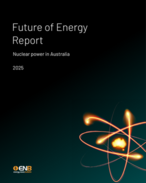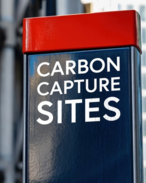This article is 19 years old. Images might not display.
The Perth-based company acquired a 100% working interest the two leases – Carter and Stockton – for a total cost of $US60,000 ($A80,686) to earn a 87.5% revenue interest.
The acquisition includes eight pump jacks, five oil storage tanks, in-field flow lines and electrical equipment to run the pumps.
To better understand the subsurface structure of the area, Westralian said it plans to run a shallow 15km 2D seismic survey worth $A51,000 over both leases.
“Drilling in the past has been based on formations exposed at the surface and are usually sited by the local drillers or diviner with very little formal science being applied to the drill locations,” managing director Stephen Thomas said.
“In the true sense up to the present day, each well has been a wildcat. Discussions with local oil explorers indicate that no seismic surveys have been run in the district and as such, no real understanding of the subsurface structural regime has been developed.”
While drilling has taken place in the area since the 1890s, it was after a discovery in the 1960s at Goose Creek, 2km north of the Carter leases, that most of the wells were drilled.
“Since this time, many wells have been drilled in the area with varying production rates. Some wells have produced up to 1000 barrels per day and some as little as one or two bpd,” Thomas said.
“Oil and gas is ubiquitous throughout the area and at varying depths. Many of the early wells were very shallow, often to only 200-300 feet (less than 100m). Some wells have been drilled to 1500 feet, with many producing oil at commercial rates.”
Covering about 490 acres, the Carter Lease contains seven wells that have produced commercial quantities of oil. But due to low oil prices over the past 20 years, five of these wells have been shut in, the company said.
A further eight wells also recorded oil shows but were not tested possibly due to the low oil price at the time, the company said.
Westralian believes the producing wells are operating well below potential, as they have not been worked for more than 15 years.
“It is anticipated work on these will certainly result in renewed oil production,” Thomas said.
Meanwhile, the Stockton lease, which covers about 160 acres, has one producing well.
This well, which has recently been restarted with minimal down-hole work is producing under test conditions.
From logs of the original hole, oil was produced from the Knox Formation at 1320 feet.
Based on old records, discussions with local industry experts and an oil price between $US65 and $70, Westralian expects to receive $A415,000 per annum in cash flow from the two leases.
“By applying new state of the art exploration techniques to these previously under explored and underdeveloped oil leases, the company will gain a low-cost entry into the Kentucky petroleum industry, especially in southern Kentucky,” Thomas said.
Like many Australian juniors, Westralian has moved to the US after fialing to succeed in Australia. The company was set up by Perth entrepeneur Peter Briggs to explore for coal seam methane in southwest Western Australia.
Its business plan was to use CSM to generate electricity and become a niche electricity supplier, marketing its gas and power to established power retailers, as well as local government, farmers and wine growers, minerals processors and other commercial users in south-west WA.
But success in its WA CSM prospects has been elusive. Near-term production at its Kentucky leases should prop up Westralian's share price and give it breathing space to develop its WA acreage.






















